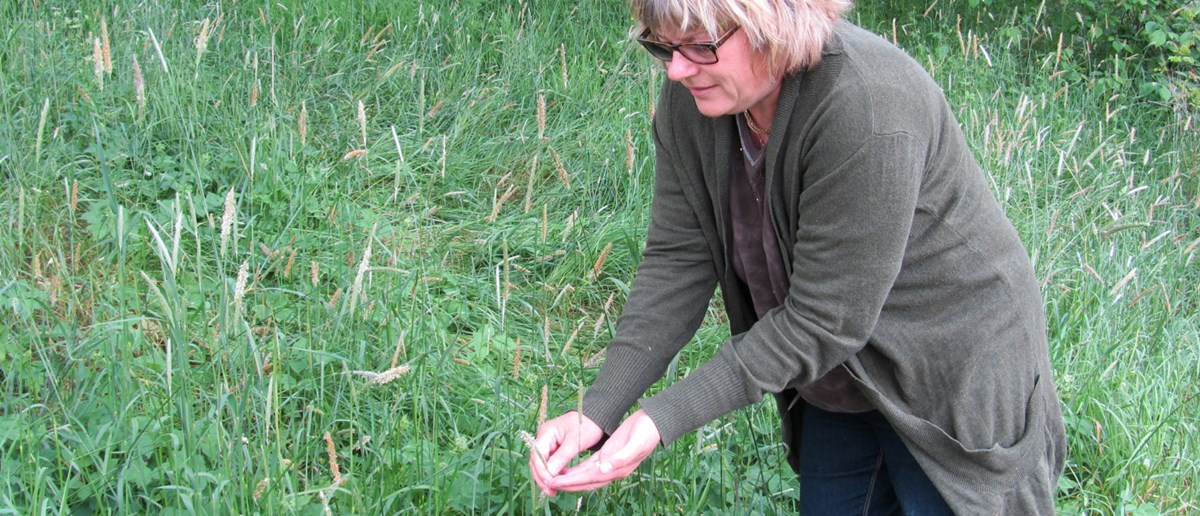Better pollen forecasts improve quality of life

About a fifth of all Swedes suffer from pollen allergy. Åslög Dahl, researcher at the Department of Biological and Environmental Sciences at the University of Gothenburg wants to improve pollen forecasts to ease sufferers’ everyday lives.
The number of people who are allergic to pollen has increased sharply since the 1970s. Pollen allergy does not only involve a runny nose and itchy eyes, the whole body is affected. Tiredness, irritation and concentration difficulties are common.
Åslög Dahl is responsible for the Pollen Laboratory at the University of Gothenburg that has measured pollen levels in the air since 1975. During the pollen season, she starts every working day at the microscope looking at the pollen that has been collected in pollen traps at five different stations in southern Sweden. She and her colleagues identify and count the amount of pollen from about 30 different species.
The quantities of pollen collected are used to report the pollen situation to the general public and to healthcare and also to make pollen forecasts for the coming 2-3 days.
"Good forecasts are essential so that allergic individuals can prevent symptoms developing by taking medicine, but also to save them from taking medicine unnecessarily", says Åslög Dahl. "They also help allergic people to plan their daily lives, for example by avoiding training out of doors when levels are high. Increased awareness of what causes one's own allergic reaction is also important."
There is a lot to consider when making a pollen forecast:
"Weather and climate influence both plants' blooming period and pollen production", explains Åslög Dahl. "Rain can wash the atmosphere. Wind direction is also important since pollen can be spread over long distances in the air."
Åslög Dahl's research deals with how to make pollen forecasts even better. One research project deals with the combination of pollen and air pollution that both affect health negatively:
"High levels of air pollution by ground-level ozone during the pollen season can for example exacerbate the effects of pollen and increase the use of medicines", says Åslög Dahl.
She points out how important the collaboration between biology and medicine is to increase understanding of pollen allergy. Currently, there is an ongoing study in which 90 children who are allergic to grass are writing diaries about their daily symptoms. The diaries will later be compared with the actual pollen levels.
"The results show that when the pollen level exceeds a critical level, the children suffer from worse symptoms and their quality of life deteriorates", recounts Åslög Dahl. "A threshold limit value like that can be used by us when we make forecasts and issue warnings."
Plants' blooming period and their pollen quantities can both change if the climate changes. How plants react to climate change and what this means for individuals allergic to pollen is yet another of Åslög Dahl's research interests:
"I often go for a walk in Botaniska to register how far different species have got in their blooming", she tells us.






